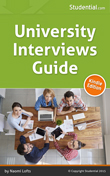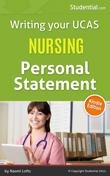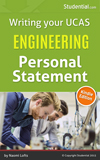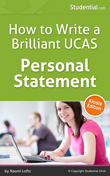You don’t need to be Einstein to know just how rewarding a career in teaching is. You get the chance to shape the lives of future generations, literally.
Which is why applying for the best teacher training courses is vital to start your teaching journey.
1. Look at your options
There are four key options to choose from when applying for teacher training and it’s about choosing the one that will be best for you.
There are two school-led and two university-led options.
School Direct is if you already have an undergraduate degree and your teacher training is in a school or consortium of schools in partnership with a university. This is for both primary and secondary schools.
You will train for 12 months full time, (up to two years part-time) in two schools and study at the partner university. In addition if you already have three years’ work experience as well as your undergraduate degree, you will receive a salary to train in the school. Don’t worry if you don’t have this work experience you will still be eligible for bursaries and grants to offset your course fees.
The second school option is SCITT (School-centred initial teacher training) which is based around a consortium of schools. Again you’ll need to be armed with an undergraduate degree and for the same timescale as School Direct, you will be train in one of the schools and study in another of the schools in the consortium.
You will also be taught by existing experienced school teachers and not at a partner university.
Studying full time for 12 months for a PGCE (Post Graduate Certificate of Education) at a university with a minimum of 24 weeks classroom experience in at least 2 schools is a third option. This is very similar to School Direct, it is just led and taught by the university.
The fourth option is available if you don’t have an undergraduate degree or equivalent. This will allow you to study your degree at a participating university and then carry on studying the same subject for a further third or fourth year to obtain your QTS (qualified teacher status).
2. Do your research
Once you’ve decided on your option, you then need to research which universities and schools best fit your needs. Think about the following:
- What teaching strategies do they have within your subject choice?
- What are the fees?
- What support is in place?
- What are the success rates for the last 3 years linked to that course?
- What do you know about the actual tutors and their teaching methods?
These are key questions which will help you decide on your final universities.
Don’t just browse the institution websites (though this is a great start) but set aside some time to go and see the school/university on open days if possible. Make sure your visits count, and find out how to get the most out of university open days. With a bit of preparation, you can gather all the information you need to make an informed decision on whether it's a good fit for you.
It’s so important that you feel happy and comfortable with the physical environment you’ll be working and studying in, as you will be spending a significant amount of time here in the future. Finally try and speak directly to the tutors on your course, either face to face or over the phone if possible to gauge how you’ll get on with them.
For more advice, take a look at our choosing a degree and choosing a university guides.
3. Write a great personal statement
When you submit your application via the UCAS Teacher Training portal, you’ll need to write a personal statement. This is the time to make sure your application stands out. It’s crucial for you to demonstrate your knowledge and skills for teaching.
A good personal statement should highlight your strengths and how you can bring these to teaching. Think about what distinct qualities you can bring to the table that will make you an amazing teacher. Your personal statement should convey energy, enthusiasm and a passion for teaching.
Key points to address include:
- your reasons for wanting to teach – in particular, why you will enjoy teaching your chosen subject and/or age group
- the qualities you have that are needed in the classroom – e.g. communication, organisation, leadership and creativity.
- how previous studies and any work experience relate to your chosen subject or age group – here you need to provide examples of what you’ve learned from your experience, and how it will contribute to your teaching
- what skills you learned during any school placements and the impact this has had on your application
- how you’ve benefited from any other experience that you may have of working with children or young people, e.g. a teaching assistant, running a sports club, or any other activity.
Your personal statement is the most important of the application, so make sure you start working on it early, and put in as much time and effort as you can to get it right. This isn't something to be left until the last minute!
Remember that the word count is fairly limited: you only have 4,000 characters (or 47 lines) including spaces and line breaks, so use the space wisely.
Finally, you shouldn’t copy from someone else’s statement or from statements posted on the internet – UCAS screens all submissions and will know if the work your statement has not been written by you.
The UCAS Teacher Training form also includes a separate section to provide details of your school and work experience, which allows you to highlight what you've done in a school or work environment. You can include as many examples on the UCAS form as you like, e.g. work placements and any other paid or unpaid experience.
4. Organise your references
Once you’ve filled in the main sections of the UCAS Teacher Training form and prepared your personal statement, you’ll need to provide two references. This is a compulsory part of the application process and you will not be able to send off your application without them.
It’s crucial that you choose individuals who know you well enough to support your ambition to become a teacher. It takes time for your references to be completed, so it's a good idea to contact your referees in advance and ask if they can respond to your request as soon as possible,
For your references, you’ll need to choose one ‘principal’ referee and one ‘secondary’ referee. The requirements for this depend on your circumstances:
Principal referee
- If you’ve been in education during the last five years, you should provide an academic reference from your principal referee – this could be a current or recent tutor
- If you’ve been out of education for longer than five years, you can provide two professional references if you think an academic reference won’t be relevant.
Second referee
- Your second reference should come from a professional – ideally someone you’ve worked for, or someone who can talk about your skills, personality and suitability for teaching
- If you're applying for a School Direct (salaried) course, one of your references must be from an employer. If you’re self-employed and unable to provide a reference from a former employer, your referee should be someone who knows you from work, who can comment on your work and suitability for teaching
- If a reference is from a school the reference must come from the headteacher
Please be aware that UCAS will not accept references from family members, friends, partners or ex-partners.
To request a reference, the process works as follows:
- UCAS will send each referee a request for a reference based on the contact details you provide
- your referees will then need to complete the reference online via the UCAS website; UCAS will not accept paper or emailed references
- if your referee does not respond within 14 days, they’ll automatically be sent a reminder by UCAS
- after this, you can use the UCAS Teacher Training site to send your own reminder
- if your referee doesn’t respond you can change your referee details at any time
UCAS will send you a confirmation once your references have been received. You can then log in to your UCAS account and make a final decision on the places you want to apply for, before submitting your application.
5. Send off your UCAS application
2020 teacher training entry is now open and you need to apply as early as possible to ensure you gain the place you want at your preferred school/university. For all four options (the school and the university ones) you apply online at UCAS teacher training. You have the choice to select up to 3 training courses across as many or as few of the 4 options as you want.
Although there isn’t a deadline date, course places are offered on a ‘first come first-offered’ basis and popular courses get filled up fast. This means you need to get your application sorted sooner rather than later.
Don’t worry if all three of the training courses you’ve applied for become filled up, you will have a second chance (called Apply 2) to add one further choice (one at a time) until you have an offer you can accept.
The 2020 entry search tool at UCAS opens on 27 September 2019, with Apply 1 opening on 8th October 2019.
Teacher training courses are the best place to start your teaching career. Seize your opportunity now to genuinely make a difference to not only your future, but the future of the students you’ll be teaching.
Further information
To find out more about training to become a teacher, take a look at these online resources:
- PGCE personal statement examples
- PGCE university interview questions
- Teacher Training Courses - UCAS.com
- Find a teacher training programme - UCAS.com
- Get into teaching - gov.uk
- Teacher training - Prospects.ac.uk
If you have any comments, questions or feedback on my post, please leave your reply below.




